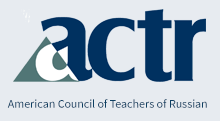Russian Language Journal
Article Title
Keywords
Russian, foreign language, universities, teaching
Abstract
In U.S. universities, interest in learning Russian as a foreign language has been relatively steady over the last 50 years. The so-called “Sputnik effect”―a surge of interest in the Russian language due to the launch of the first Soviet sputnik in 1957 and, as a result, the shocking revelation that the USSR might become a serious rival―is considered the beginning of a new era, during which Russian language programs were established at major American universities. The interest in learning Russian did not subside during Gorbachev’s Perestroika in the mid-1980s; neither did it weaken right after the collapse of the USSR in 1991. There was a short period of apathy towards the Russian language and Russia, in general, in the mid-1990s and early 2000s, when the total national enrollment in Russian programs dropped from 44,626 students in 1990 to 24,729 in 1995 (Comer, 2012). The belief that Russia no longer poses a threat to the U.S. and that it is turning into a democratic country, combined with an economic recession in the U.S. in the first decade of the new century, resulted in relatively lower enrollment rates for those years (e.g., 2006- 2007 according to the OSU data).
Recommended Citation
Isurin, Ludmila
(2013)
"Hits and Misses in Teaching Russian in the US: The Perspectives of Instructors, Students, and Enrollment,"
Russian Language Journal: Vol. 63:
Iss.
1, Article 4.
Available at:
https://scholarsarchive.byu.edu/rlj/vol63/iss1/4

